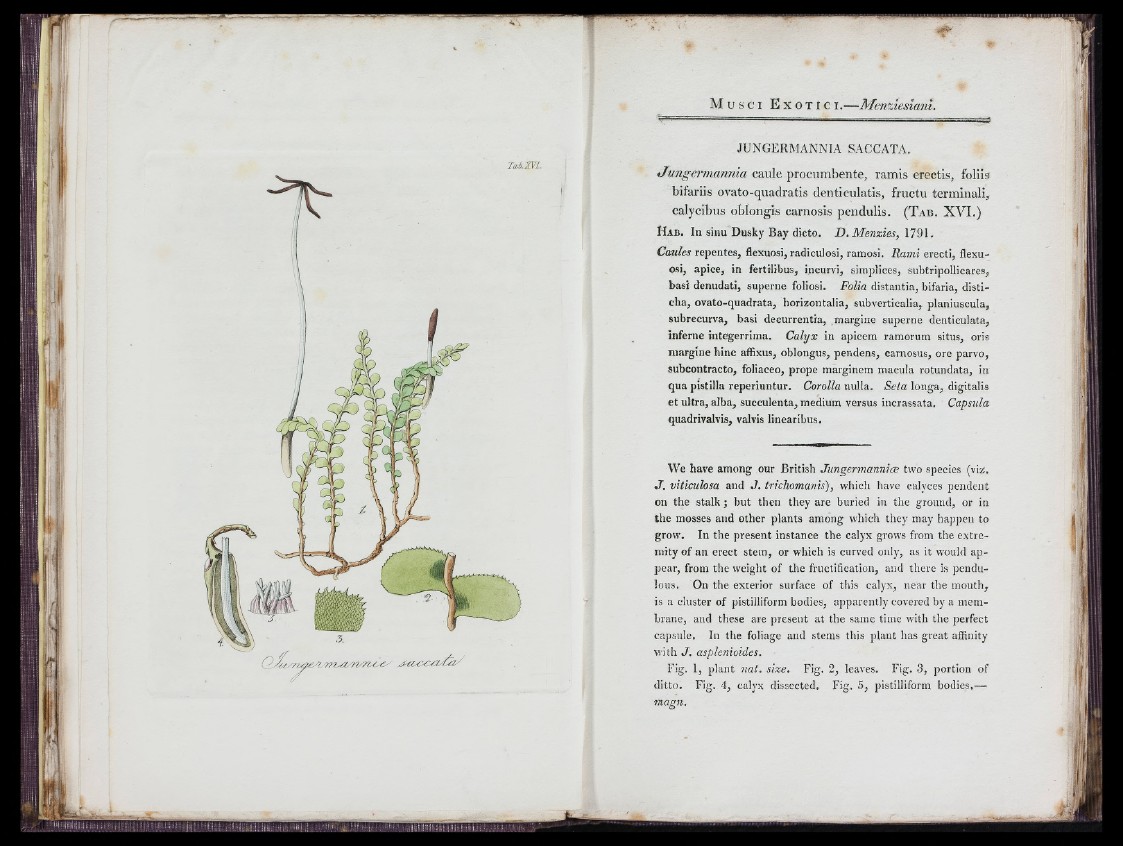
Tab-XVl.
ri
JUNGERMANNIA SACCATA.
Jungermannia caule procumbente, ramis erectis, foliis
bifariis ovato-quadratis denticulatis, fructu terminali,
calycibus oblongis carnosis pendulis. ( T a b . XVI.)
H ab. In sinu Dusky Bay dicto. D . M enzies, 1791.
Caules repentes, flexuosi, radiculosi, ramosi. Rami erecti, flexuosi,
apice, in fertilibus, incurvi, simplices, subtripollicares,
basi denudati, superne foliosi. Folia distantia, bifaria, disticha,
ovato-quadrata, horizontalia, subverticalia, planiuscula,
subrecurva, basi decurrentia, margine superne denticulata,
inferne integerrima. Calyx in apicem ramorum situs, oris
margine hinc affixus, oblongus, pendens, carnosus, ore parvo,
subcontracto, foliáceo, prope marginem macula rotundata, in
qua pistilla reperiuntur. Corolla nulla. Seta longa, digitalis
et ultra, alba, succulenta, medium versus incrassata. Capsula
quadrivalvis, valvis linearibus.
We have among our British JungermannicB two species (viz.
J . viticulosa and J . tricliomanis), which have calyces pendent
on the stalk ; but then they are buried iu the ground, or in
the mosses and other plants among which they may happen to
grow. In the present instance the calyx grows from the extremity
of an erect stem, or which is curved only, as it would appear,
from the weight of the fructification, and there is pendulous.
On the exterior surface of this calyx, near the mouth,
is a cluster of pistilliform bodies, apparently covered by a membrane,
and these are present at the same time with the perfect
capsule. In the foliage and stems this plant has great affinity
with J . asplenioides.
Fig. 1, plant nat. size. Fig. 2, leaves. Fig. 3, portion of
ditto. Fig. 4, calyx dissected. Fig. 5, pistilliform bodies.—
masn.
L